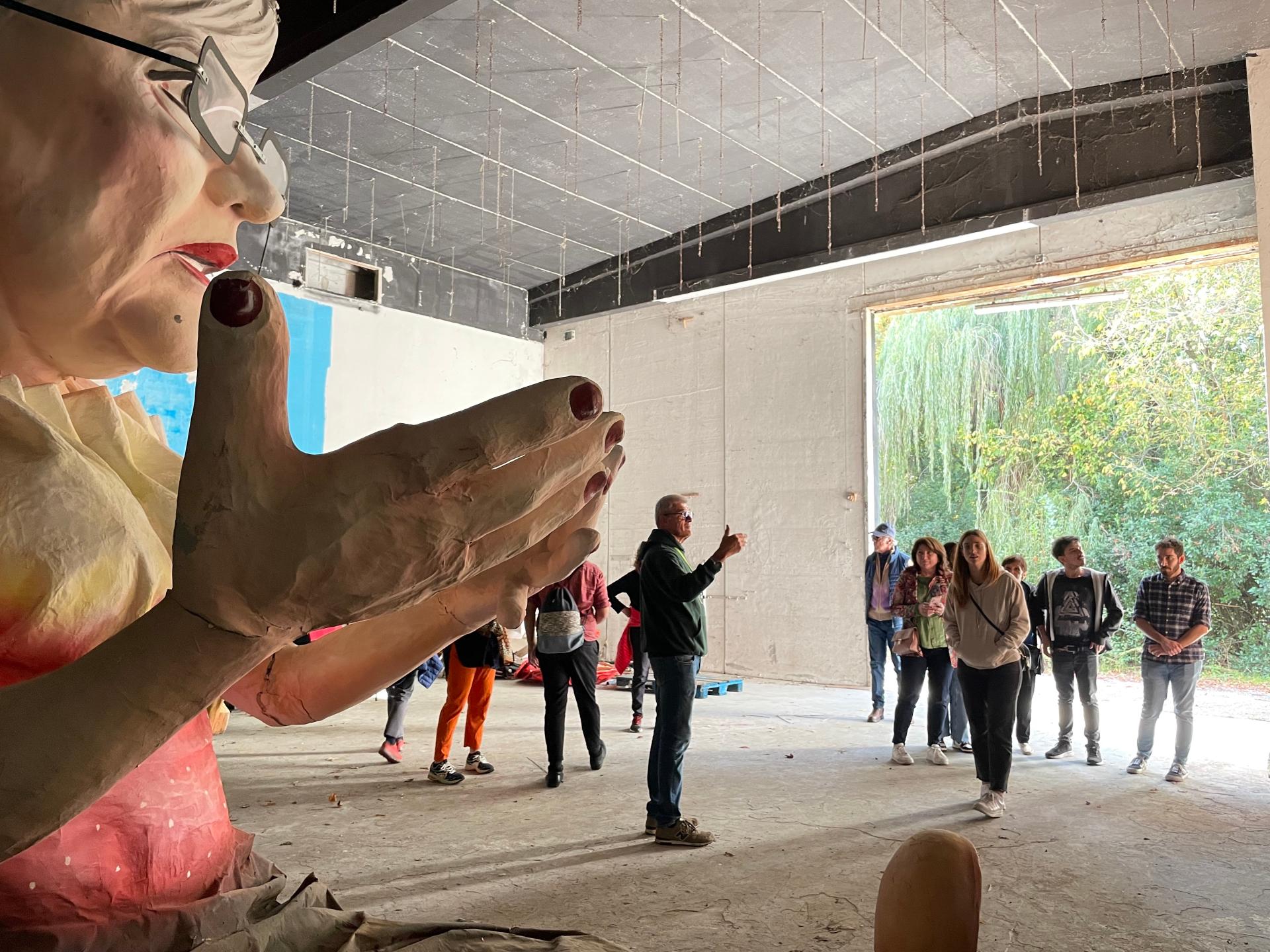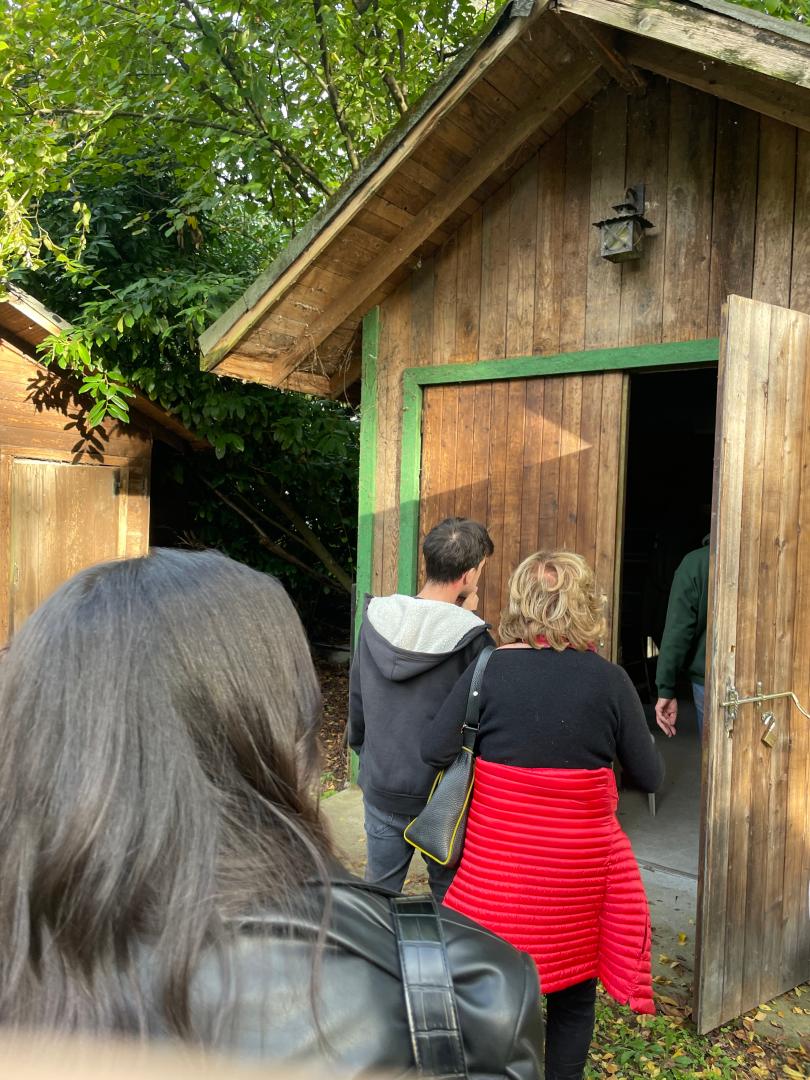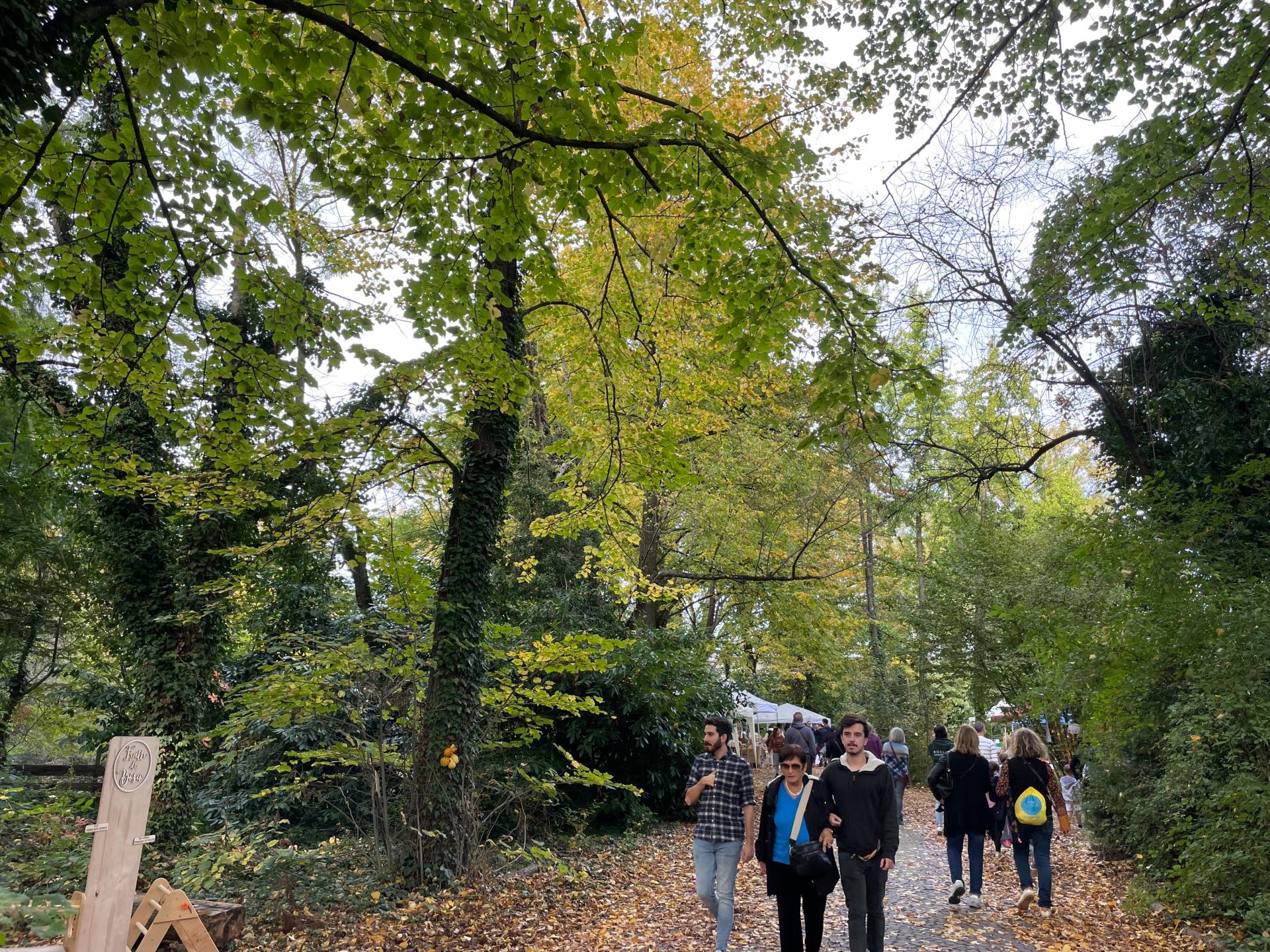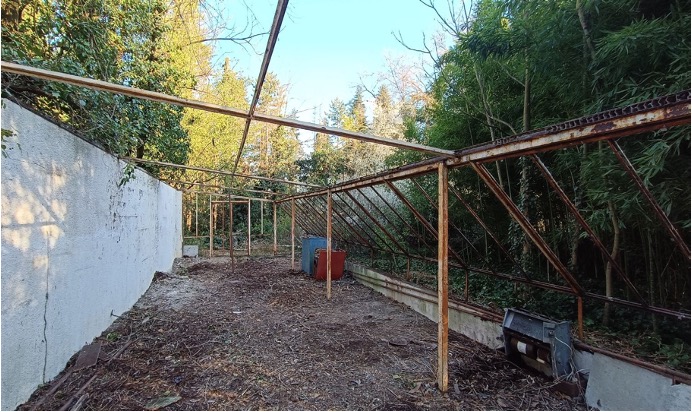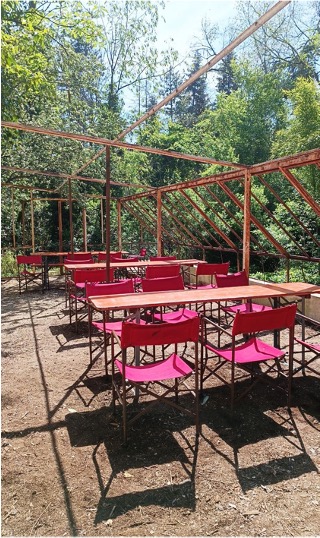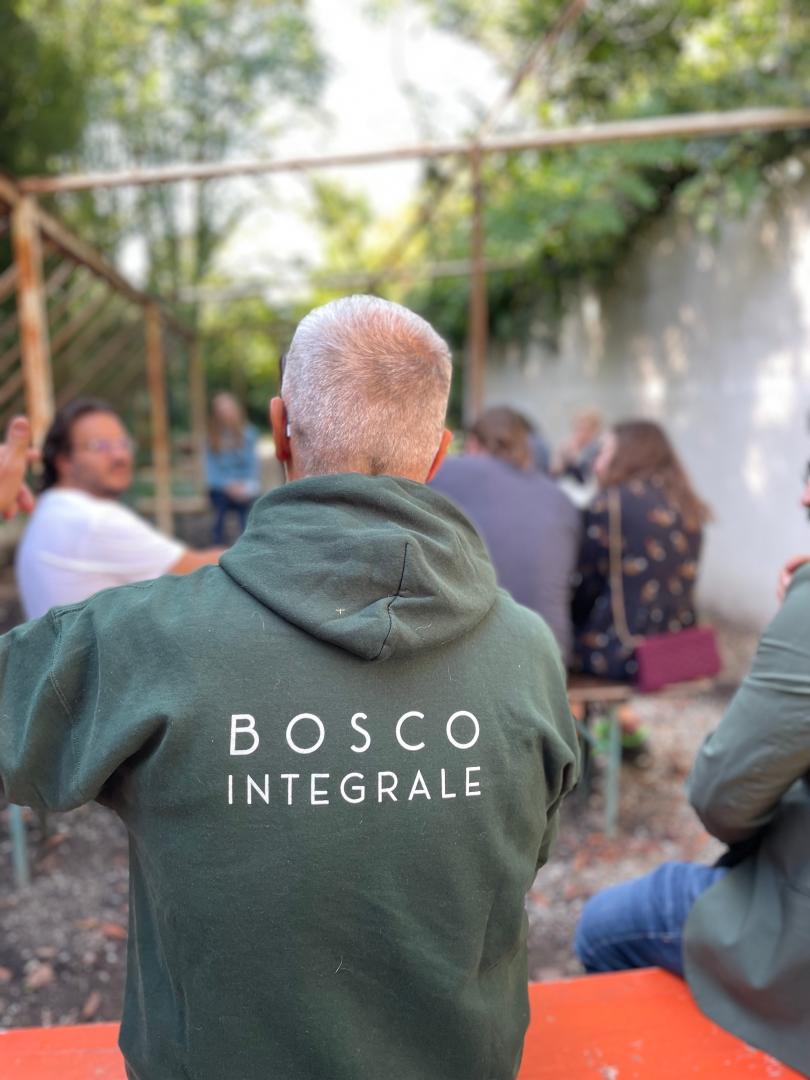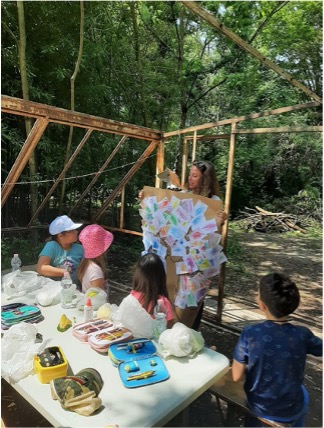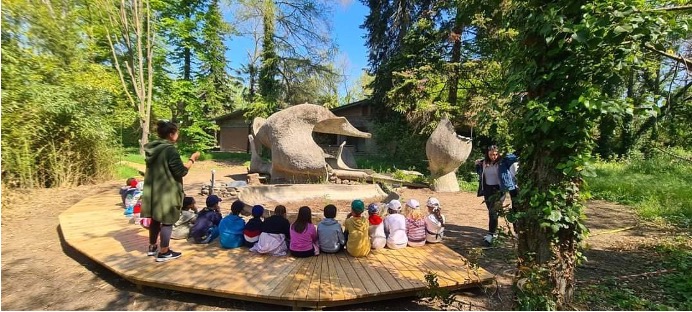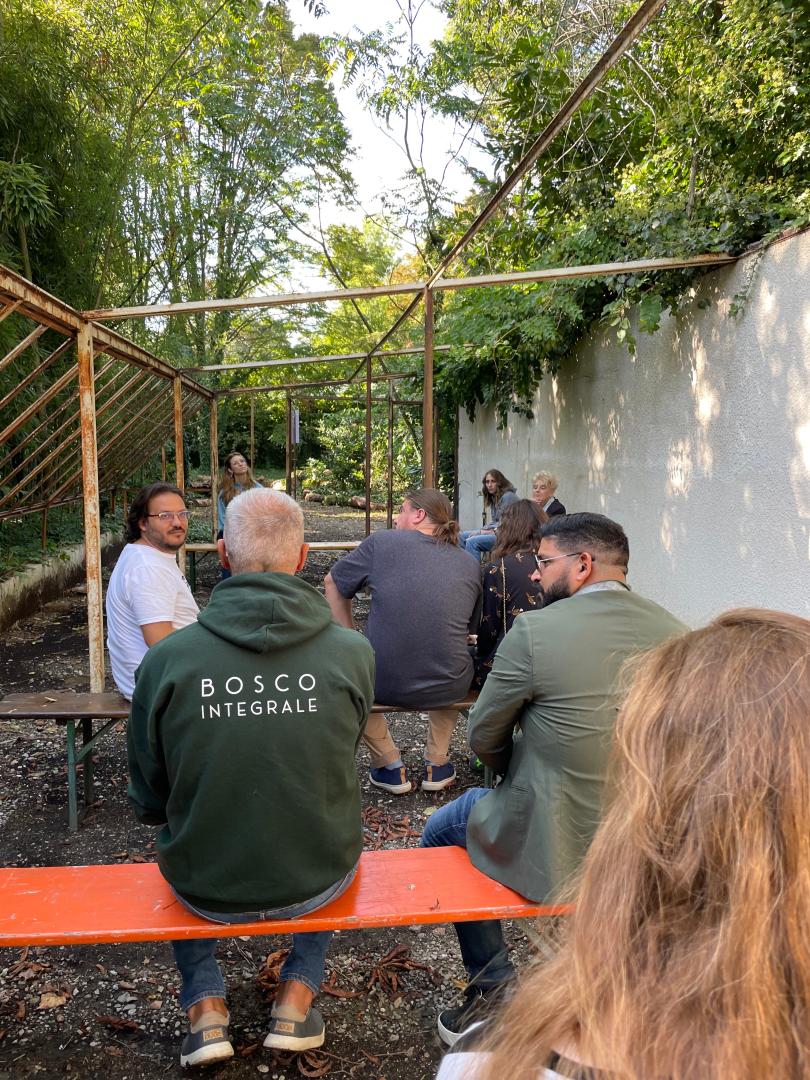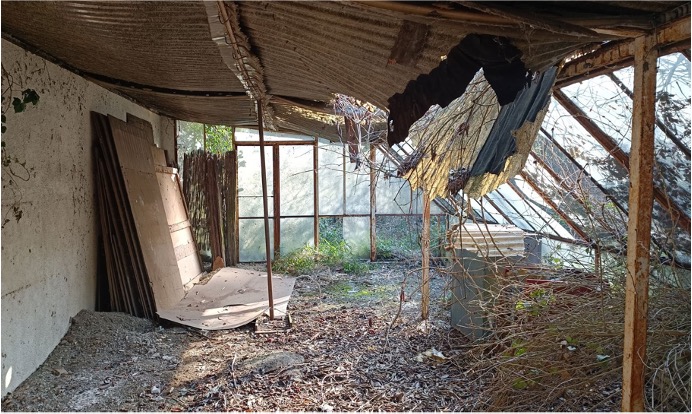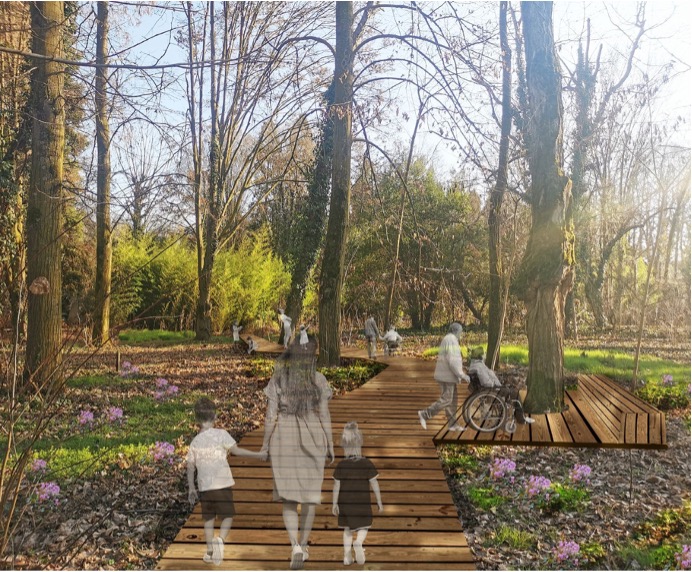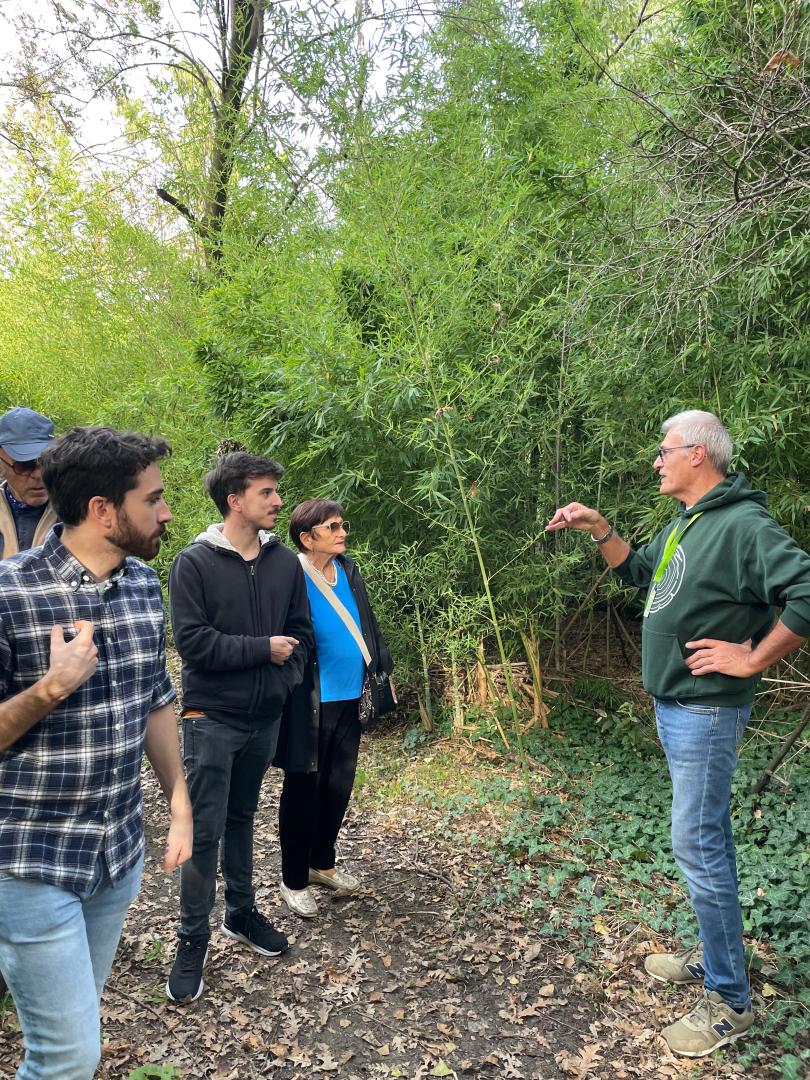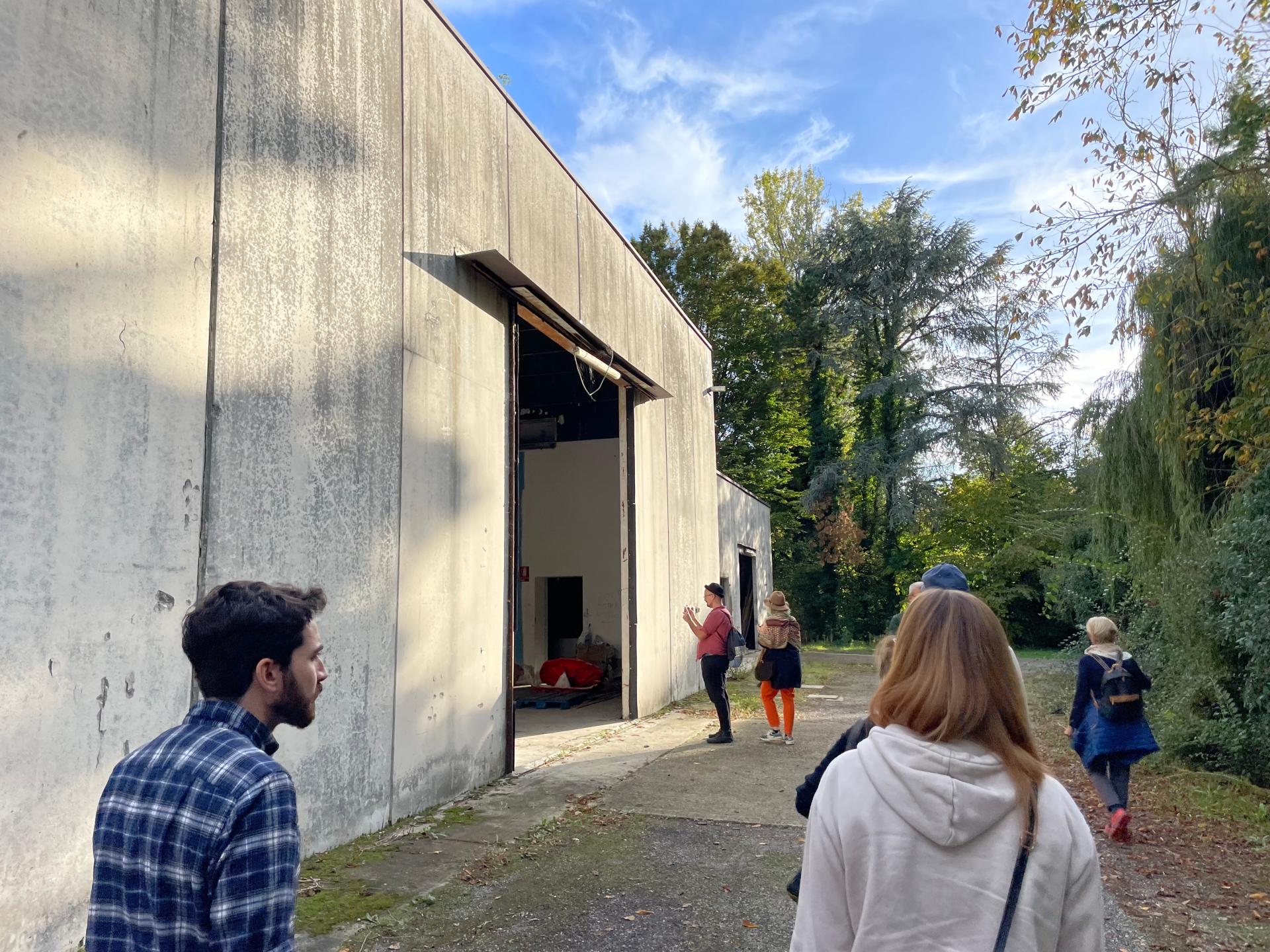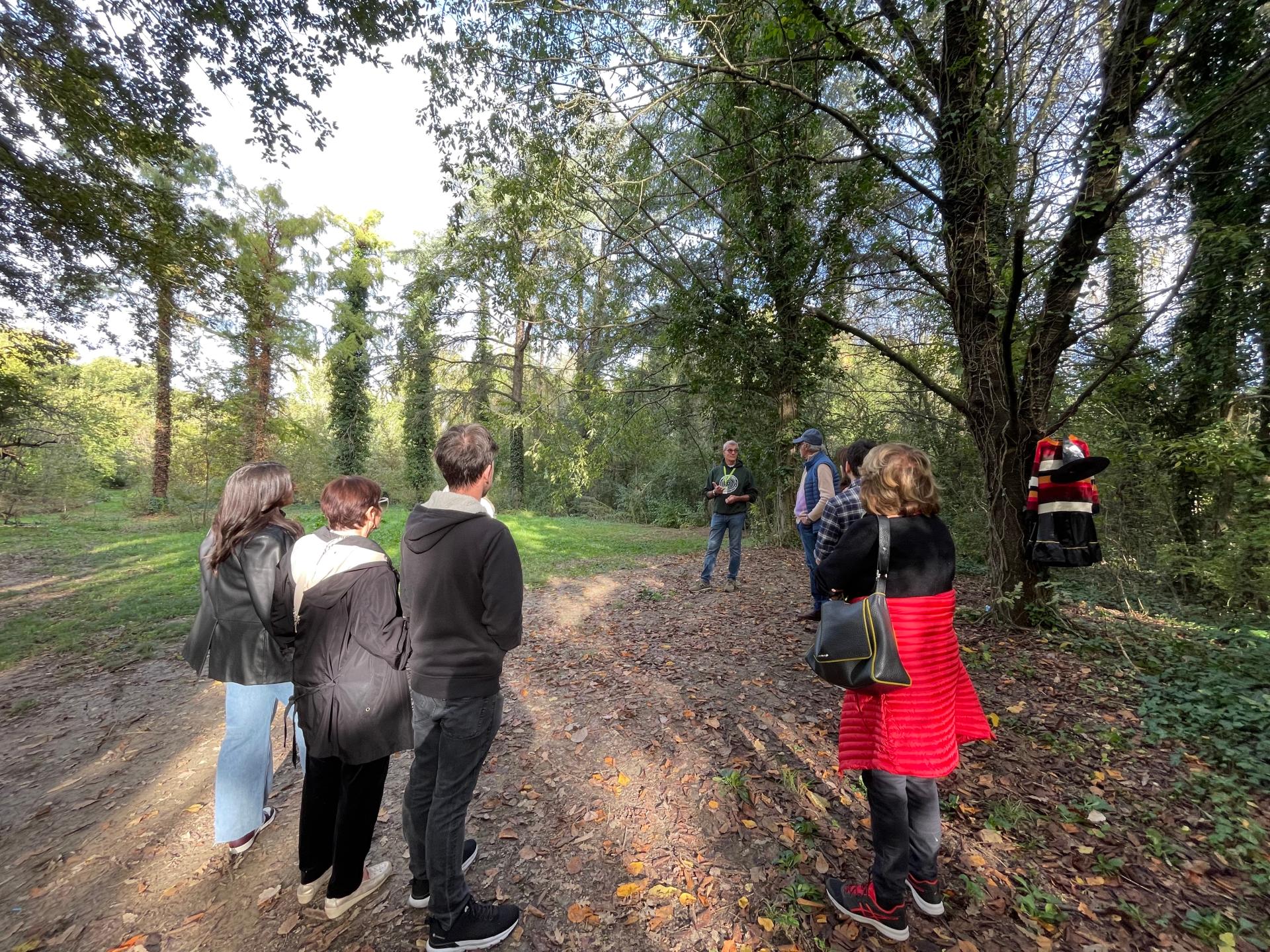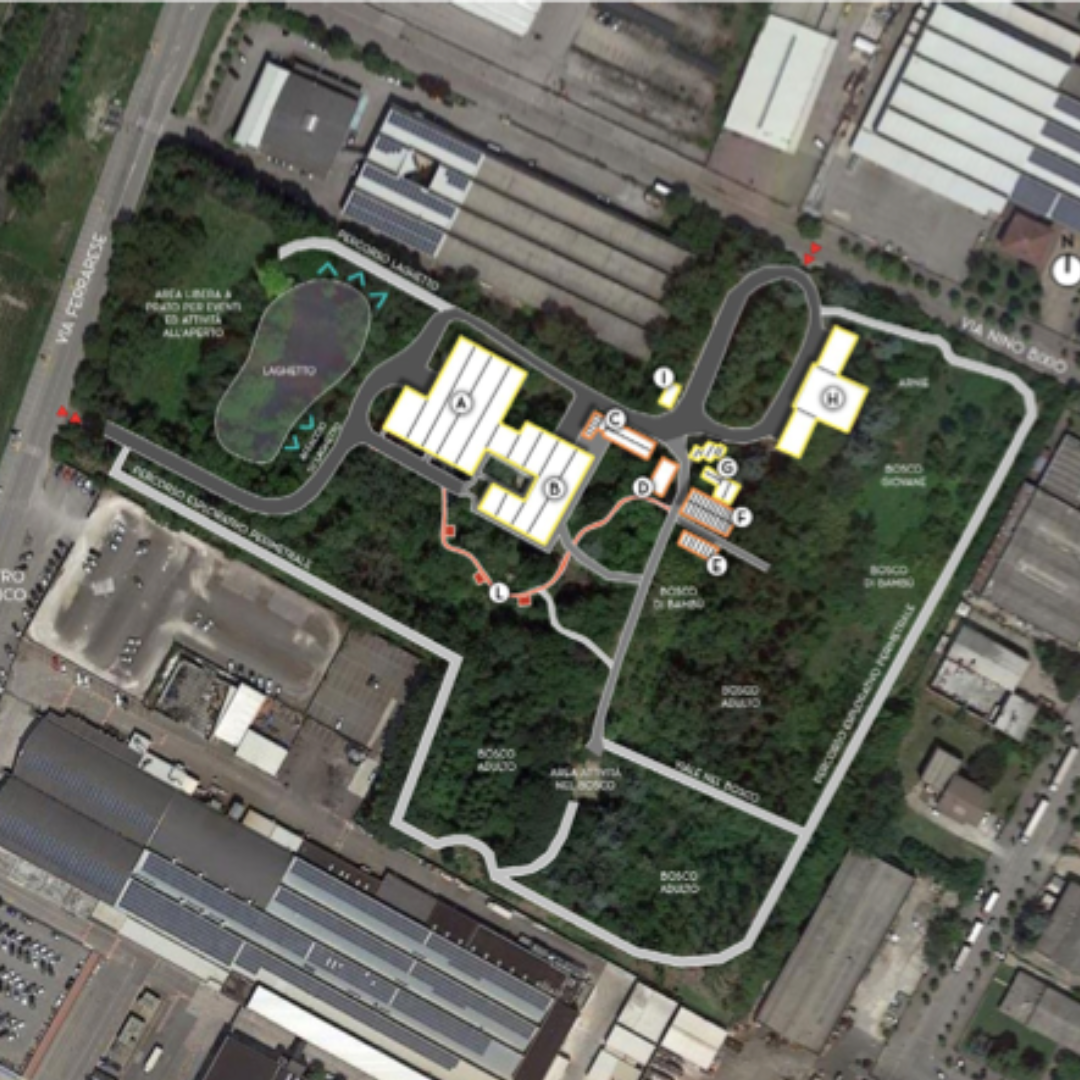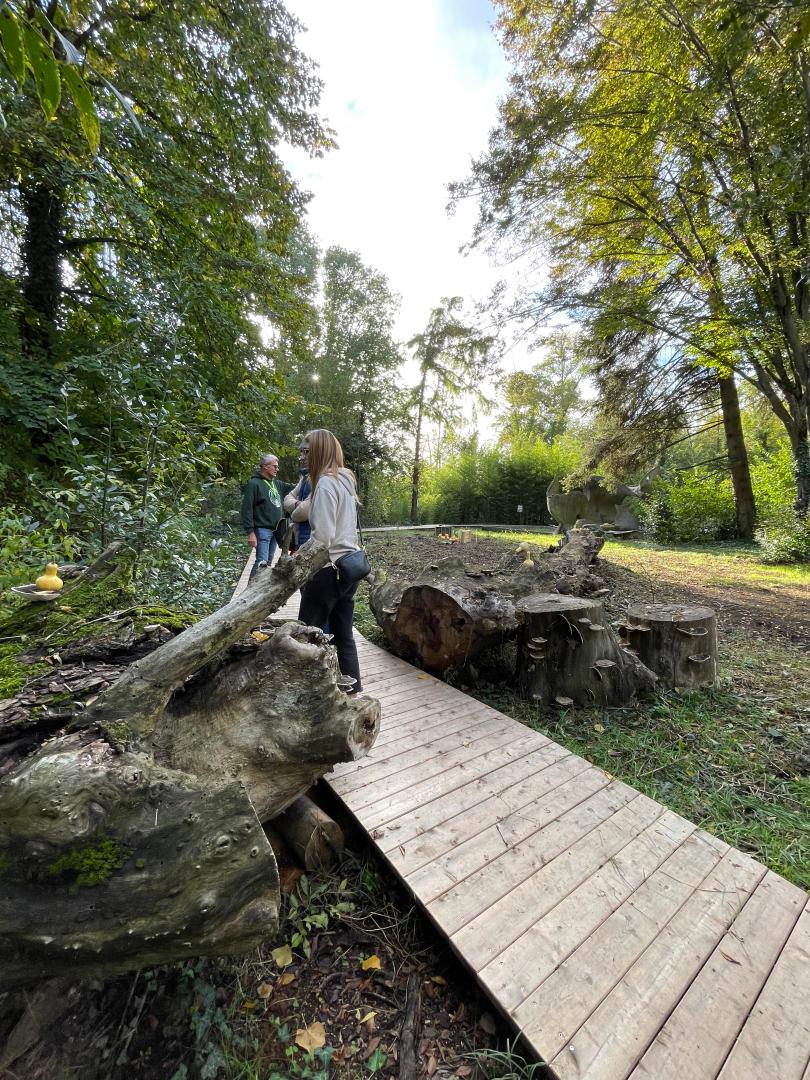Bosco Integrale
Basic information
Project Title
Bosco Integrale
Full project title
Bosco Integrale - integration between humans and nature
Category
Reconnecting with nature
Project Description
Il Bosco Integrale, a project in the city of Cento, promotes man-nature integration through sustainability and innovative education. 5 hectares of forest in a highly industrialized area, which preserves the environment with accessible routes. It involves volunteers for the management of the forest, transforming pre-existing structures into spaces for social activities. Art and architecture merge, offering beauty and man-nature connection. Inclusion is key, with a focus on accessibility for all.
Geographical Scope
Local
Project Region
Cento (FE), Italy
Urban or rural issues
It addresses urban-rural linkages
Physical or other transformations
It refers to a physical transformation of the built environment (hard investment)
EU Programme or fund
No
Description of the project
Summary
The Bosco Integrale is a human-nature, generational and social integration project that develops over 5 hectares in the Municipality of Cento, Emilia-Romagna, Italy. Born from the idea of the Caterina Novi ETS Foundation to improve the quality of life for young people, children, fragile people, disabled people and the elderly, the project focuses on sustainability and innovative education.
The overall goal is to create an inclusive and sustainable environment, preserving the environment, supporting recycling and regenerating biodiversity. Bosco Integrale preserves the environment through natural paths and wooden walkways to ensure accessibility for all. It involves volunteers in the management of the forest and in the transformation of pre-existing structures into spaces for social activities and outdoor education.
Art, architecture and nature come together in the woods, with integrated works of art to create sensory journeys. Events like "Apriti Bosco" connect nature to people through workshops and moments of aggregation, promoting inclusion through accessibility and intergenerational collaboration. Governance involves the Caterina Novi Foundation and an Association open to citizens, with a methodology based on participatory planning, shared governance and inclusive implementation. Crowdfunding is crucial for economic sustainability, and the project can be replicated with elements such as classrooms in the forest, co-design, art-architecture combination, ruralization of industrial areas and inclusive design. Address global challenges by contributing to Agenda 2030 goals: 4 (education), 5 (gender equality), 11 (sustainable cities), 13 (climate) and 15 (biodiversity). Results include the human-nature connection, improved quality of life, protection and restoration of ecosystems, community involvement, with over 1,000 daily participants in "Apriti Bosco", 100 volunteers and over 65,000 online users. Bosco Integrale is a model of urban regeneration!
The overall goal is to create an inclusive and sustainable environment, preserving the environment, supporting recycling and regenerating biodiversity. Bosco Integrale preserves the environment through natural paths and wooden walkways to ensure accessibility for all. It involves volunteers in the management of the forest and in the transformation of pre-existing structures into spaces for social activities and outdoor education.
Art, architecture and nature come together in the woods, with integrated works of art to create sensory journeys. Events like "Apriti Bosco" connect nature to people through workshops and moments of aggregation, promoting inclusion through accessibility and intergenerational collaboration. Governance involves the Caterina Novi Foundation and an Association open to citizens, with a methodology based on participatory planning, shared governance and inclusive implementation. Crowdfunding is crucial for economic sustainability, and the project can be replicated with elements such as classrooms in the forest, co-design, art-architecture combination, ruralization of industrial areas and inclusive design. Address global challenges by contributing to Agenda 2030 goals: 4 (education), 5 (gender equality), 11 (sustainable cities), 13 (climate) and 15 (biodiversity). Results include the human-nature connection, improved quality of life, protection and restoration of ecosystems, community involvement, with over 1,000 daily participants in "Apriti Bosco", 100 volunteers and over 65,000 online users. Bosco Integrale is a model of urban regeneration!
Key objectives for sustainability
The Bosco Integrale project develops the objectives in terms of sustainability through three areas of intervention: preserving the environment, supporting recycling and regenerating biodiversity. Preserving the environment: through an analysis of the green and naturalistic heritage of the area, natural paths have been identified within the Integral Forest to guarantee access without proceeding with invasive methods. The strong work of cleaning and rearranging the paths, carried out by volunteers, has made it possible to restore some areas of the forest, without having to cut trees or modify the spontaneous growth of nature. To guarantee immersive access to the forest, almost 100 linear meters of wooden walkways were built, which, crossing a particularly suggestive area of undergrowth, thanks to its wealth of seasonal essences, allows sustainable access to the entire area. The project also intervenes in a sustainable way on the infrastructures present there. These areas have now been cleaned and progressively recovered in order to make them usable for local associations, as well as offering outdoor education courses for schools. Supporting recycling: since its official opening in 2022, the Bosco Integrale has organized exclusively sustainable events, with attention to recycling and zero CO2 emissions deriving from energy-intensive services. Furthermore, with a view to correct reuse of natural waste, any dry and fallen trees in the forest are not cut and thrown away, but left in their habitat and only made safe. Hence the third point, regenerating biodiversity: in addition to preserving the biodiversity of the flora, the Bosco Integrale has a small lake inside which guarantees the life of local fauna, made up of cormorants, as well as a fox spotted so far. Of strong impact is the presence of several beehives which, thanks to the work of the bees, not only favors the micro-environment, but also fuels an important fundraising project from the production of honey.
Key objectives for aesthetics and quality
Art, architecture and natural panorama intersect, offering the project three main objectives in terms of beauty: offering a sensorial-experiential journey, connecting nature to people, integrating new cultures and values. The main objective is to explore the relationship between man and nature in all its facets. To do this, during the 2022 cleaning works, a work dating back to the artist Vittorio Giorgini was found which, through an experimental concept, explores the relationship between man and nature, or rather how architecture should fit into and relate to the natural environment. Hence the creation of an art journey within the Bosco Integrale that works with works located in specific areas, designed and created specifically for the place so that the environment does not become a background but an integral part. The finishing of another work is currently underway, inserted inside a reconverted pre-existing structure, which has the aim of creating a sensorial connection between artistic and naturalistic meditation, through the work of local artists. A place of meditation, which through art and nature aims to integrate new cultures and values with a view to a beauty that equates to harmony and peace. However, through the creation of the "Apriti Bosco" events, the Bosco Integrale becomes a place with the aim of connecting nature to people. The event within the project, considered the main event of the year, has the aim of connecting the social and artisanal fabric of the place with the nature of the forest, offering sensorial itineraries, workshops, festivals and moments of aggregation. But the Bosco Integrale does not connect nature to people only during these events. Every day, thanks to the work of volunteers and artisans, we work to offer the local population a space immersed in an industrial area that constitutes an oasis of peace and harmony, between people and nature.
Key objectives for inclusion
Inclusion, in the Bosco Integrale project, is seen with a triple lens of objectives: including by making accessible, consolidating the presence of the Forest in society, transforming new ways of living together. The main objective of the Bosco Integrale is to create human biodiversity, from which everyone can benefit and benefit, without losing sight of the protection of nature. The Forest therefore has the intention of being a safe space available to the community, where through the balance between man and nature, sustainable practices come to light to support those who most need help and inclusion. At the heart of the project is the well-being of the community. The awareness behind this initiative is to transformatively create a new sustainable model of life in relationship with nature, capable of concretely responding to various social and educational needs. It is important to remember where the objectives of the Bosco Integrale come from. After the untimely death of Caterina Novi, her parents and siblings questioned the current lifestyle of our society, how man relates to nature, how children grow up and approach the relationship with the "other ”. For this reason the Bosco project aims to promote volunteering and the active participation of the community in the management of natural resources and the environment, encouraging the collaboration of a heterogeneous group of people who, despite their different ages and interests, constitute the social soul of the project. Inclusion in the Bosco Integrale therefore passes not only through hospitality and accessibility for all (including attention to motor and visual disabilities, with the creation of walkways and signs in Brail), but also through intergenerational collaboration and social.
Results in relation to category
With the Bosco Integrale we are reconnecting humanity with nature. We bring young and old people closer together in living a quality of life more oriented towards preserving the environment and promoting the normal flow of things. With the project we are actively contributing to the protection, restoration and/or regeneration of natural ecosystems (including soil and water cycles) and biodiversity, presenting the conservation and restoration of the environment as a common responsibility for all community members and using green areas as places of connection between common and shared spaces between neighborhoods. This transformation has brought advantages in terms of quality of experience for communities, for example by taking into account traditions, cultural heritage and local needs. In quantitative terms, the project, within its main event "Apriti Bosco", has allowed for both 2022 and the current year the approach of over 1,000 people per day, with the contribution of over 100 volunteers, also coming from areas surrounding the Municipality of Cento. In statistical terms, also through the use of social communication, over 65,000 users follow the developments of the project, positively disseminating the urban regeneration activities that the project proposes. In general, on the basis of all the activities carried out so far, we have counted approximately 20,000 accesses to the Bosco Integrale site. An impressive number if we think of an area that until 3 years ago was abandoned and destined to be demolished to make room for other industrial sites. The impact on the Bosco area was notable if we also think of the strong interest shown by the municipal administration in making it a project with landscape constraints and socio-cultural value for the city.
How Citizens benefit
The Bosco Integrale project follows a multi-level approach in the involvement of civil society and all citizens. This can be highlighted starting from the governance of the project: the Caterina Novi ETS Foundation is the owner and creator of the project, but the management and implementation of activities in the Forest is delegated to the Association, open to all, and involving all citizens from the conception of proposals/activities to their implementation. With the association, citizens are called to participate through a participatory model, made up of periodic meetings and making their time and skills available for the maintenance and improvement of the project. With the approach of giving an open space to citizens and local networks, the Associazione Bosco Integrale Caterina Novi OdV aims to make the Bosco project known to more and more people and local entities, as well as promoting all the activities of social, cultural and general interest nature active within the project. With a view to encouraging a process of sharing and co-creation and co-participation of the project, the Bosco was also opened to local schools, with the proposal to think of various workshops aimed at different age groups. Hence the experimental idea, concluded for this first phase in 2023, of having three classes of a Comprehensive Institute in Cento carry out three entire days of outdoor education, with non-formal methods and approaches. The open-air Informal Classroom, inside the former greenhouse, has thus become the iconic place of a participatory process on different levels, which involves neighbourhoods, civil society and schools in the co-creation of activities within the Bosco Integrale. A method that aims to take a global multi-level approach, to make the project scalable and impactful.
Physical or other transformations
It refers to a physical transformation of the built environment (hard investment)
Innovative character
The innovative character of the project fits into 3 main topics: the ruralization of industrial areas, the concept of "human biodiversity" and the transformation of the urban territory. The concept of ruralization of industrial areas is characterized by the place where the Bosco Integrale is located. Within the industrial area of Cento this "green lung" redesigns the concept of an industrial area in an urban context, enhancing places of sociality, contact with nature and beauty. All elements that help to enhance the area and increase the well-being of the workers who work in the area. This concept of ruralization of urban areas reflects the desire to repopulate industrialized urban spaces in order to improve the quality of life. This innovative character fits well with the third point, that of the transformation of the urban territory. In fact, the project has created a strong impact on the local community, so much so as to carry forward a path of protection and urban transformation of the area. As already analysed, the Bosco area is located within a predominantly artisanal and productive space and for this reason, in the urban plans, this area is also indicated as a productive area. The Project, with a view to involving Stakeholders, has opened a table with the Municipality of Cento so that the Integral Forest is recognized and protected at a regulatory level. Giving up the possibility of productive construction in the area and creating a landscape and naturalistic constraint would mean protecting the process of safeguarding and transforming the territory and the community that inhabits it. The innovation lies in grafting social use and personal services into an extremely industrialized area. Finally, the theme of human biodiversity has in its innovative approach the desire not only to safeguard natural biodiversity, but above all to offer a better lifestyle based on inclusive sharing and sociality.
Disciplines/knowledge reflected
The Bosco Integrale was born as a project of inclusion and integration and for this reason it has always involved various bodies and professional figures in a multi-disciplinary approach from the beginning. Starting from the ownership which has a profound knowledge of the entrepreneurial sector, the project was then enriched with the contribution of Third Sector bodies, environmental specialists, qualified professionals in various fields, from psychology to architecture, musicians, artists, social services and enthusiasts who have made their own contribution to achieving the objective of well-being for both humans and the environment. The main form of interdisciplinarity can be seen in the collaboration between art and territorial urban planning, as well as between inclusion and environmental preservation works. The Bosco Integrale experiments with different approaches also linked to aspects of non-formal education to encourage dialogue between multiple actors and identify elements of innovation that help those approaching the project to feel in a safe space where they can express themselves. In addition to the disciplines listed, the Bosco Integrale project goes beyond conventional aspects, offering those who use the Forest a multi-sensorial and non-formal experience. The development of this approach can be seen in various workshops co-created within the Forest, such as the inclusion in telepathic communication with animals, or gaming, with the creation of thematic treasure hunts aimed at secondary school students first degree. This model is seeing not only the participation of individual professionals, but also the world of academia, as well as associations linked to European transdisciplinary design activities.
Methodology used
The Bosco Integrale Project could not exist without its volunteers who, in less than two years, have become an integral part of the project itself, growing together with it and constituting the operational part of all the activities carried out within it. The project is based on three main methodological pillars: participatory design, shared governance and inclusive implementation. At the same time as the birth of the Foundation which has a more managerial role in the Bosco Integrale, the need to give space to the community gave rise to the Caterina Novi ODV Bosco Integrale Association which promotes volunteering and the active participation of the community in the management of natural resources and environment, in particular of the Bosco Integrale di Cento (FE). The association intends to raise awareness of the Forest, just as it intends to support and promote all activities of a social, cultural and general interest nature active within the Bosco Integrale or in the buildings that access it. The heterogeneity of people, both in age groups and interests, is unique with a multi-stakeholder approach in shared protection and love for the Bosco Integrale. The Association's statute itself is written with the aim of encouraging, as widely as possible, the participation of members in the organization and activities of the association and the promotion of volunteering. Added to this participatory approach and open governance is an approach oriented towards the economic sustainability of the project. Among these, crowdfunding is an essential element for the financing of the activities, capable of allowing the creation of wooden walkways within the paths of the Forest, thanks to important private financial stakeholders. Finally, the methodology used is that of inclusion: every activity designed and carried out in the Forest is oriented towards two levels of inclusion, the generational one and that towards disability.
How stakeholders are engaged
Through a method based on consultation, shared development and self-governance of the project, since its inception the Bosco Integrale project has involved numerous people and entities, who have shaped the initial rough idea and have modified and adapted it over time to the reality we are in. First, at a local level, an informal group of third sector bodies (social cooperatives and foundations) was created which participated in the co-creation of the project idea, especially relating to aspects of inclusion. Their experience helped to think about which activities could benefit from sharing spaces and activities, and in the relationship with the surrounding nature. This informal team of stakeholders collaborates directly with the project, proposing themes such as non-formal outdoor education, intergenerational education, inclusion and work and housing independence of disabled people, social inclusion of the elderly, reintegration of fragile young people. In addition to citizens, other stakeholders, especially associations, have come into contact with the project over time, bringing ideas and carrying out environmental education, biodiversity protection, physical and mental well-being activities, from a self-government perspective.
The Municipality of Cento is also among the main stakeholders of the project. The various administrations have always supported the birth of this new reality, proving themselves open to dialogue. Currently the Municipality proves to be an important partner in granting both free and paid patronage to the events that are held. Furthermore, a joint project is being carried out to protect the area as a forest heritage and as a pilot project for a regulation for the temporary use of the spaces which will allow us to expand the use of the spaces and live in the buildings by changing their use restrictions. Therefore an important process for the Bosco but in which the Bosco itself will become a prime example for other realities in the Cento area.
The Municipality of Cento is also among the main stakeholders of the project. The various administrations have always supported the birth of this new reality, proving themselves open to dialogue. Currently the Municipality proves to be an important partner in granting both free and paid patronage to the events that are held. Furthermore, a joint project is being carried out to protect the area as a forest heritage and as a pilot project for a regulation for the temporary use of the spaces which will allow us to expand the use of the spaces and live in the buildings by changing their use restrictions. Therefore an important process for the Bosco but in which the Bosco itself will become a prime example for other realities in the Cento area.
Global challenges
When the Bosco Integrale project was born, the main idea was to offer young people in the area a new vision in revitalizing the spaces of their local context to achieve a better, more inclusive and environmentally friendly quality of life. With this vision, and with the development that the project has taken on during its implementation phases, the project responds to the global challenges of the 2030 Agenda, with the main focus on objectives 4, 5, 11, 13 and 15. Through these objectives the Bosco Integrale seeks to build a new educational model, based on the use of nature as an environment of knowledge and non-formal use of education. Through objective 5, however, we try to achieve the global objective of making the local context more inclusive, eliminating social and cultural barriers, making the Forest a "safe zone" for the free expression of everyone. With objective 11, however, the transformative process of a city's urban planning would make the territory more attentive to the quality of life of its citizens, offering smart and sustainable spaces. Finally, with objectives 13 and 15 the intention is to revive the biodiversity of the area, offering a climate suitable for the natural growth of fauna and flora, as well as offering actions to combat climate change by encouraging the insertion of woods in areas of high productivity and consumption of CO2, so as to favor its natural absorption. Finally, in the broader European strategy, the Bosco Integrale, in addition to satisfying and having as its beacon the values of the New European Bauhaus, seeks to locally achieve the objectives of the Fit to 55 Strategy and the Long Term Vision for a Rural Europe.
Learning transferred to other parties
The Bosco Integrale rests its project on 5 pillars that can be replicated or transferred to other similar situations in Europe and beyond: (1) classrooms in the forest, (2) co-planning and co-participation in the maintenance and implementation of the activities of the Bosco with the whole community, (3) the combination of art and sustainable architecture in connection with nature, (4) ruralization of industrial areas and transformation of the urban assets of a city, (5) attention to inclusive design in every aspect of the project, aimed at making it truly accessible for everyone.
The replicability of the project is based on these 5 points, as each of these is designed to become a model of social planning, preservation of environmental biodiversity and regeneration of human biodiversity. A model which, starting from the governance system, which sees a Foundation owning the area but an association managing its implementation and shared participation, can be replicated as a model of development and social innovation in other territories. These 5 points, together, constitute an urban regeneration model which can also be aimed at old abandoned industrial sites near green areas, or abandoned fields/woods or unused urban contexts and which can be reborn through bottom-up planning and inclusive sharing. of activities, aimed at universal accessibility, for people with disabilities and/or fewer opportunities.
The replicability of the project is based on these 5 points, as each of these is designed to become a model of social planning, preservation of environmental biodiversity and regeneration of human biodiversity. A model which, starting from the governance system, which sees a Foundation owning the area but an association managing its implementation and shared participation, can be replicated as a model of development and social innovation in other territories. These 5 points, together, constitute an urban regeneration model which can also be aimed at old abandoned industrial sites near green areas, or abandoned fields/woods or unused urban contexts and which can be reborn through bottom-up planning and inclusive sharing. of activities, aimed at universal accessibility, for people with disabilities and/or fewer opportunities.
Keywords
Reconnect with nature
Promote human as well as natural biodiversity
Making an industrial area sustainable
Testing new methods of non-formal outdoor education
Be an accessible and inclusive place for all

